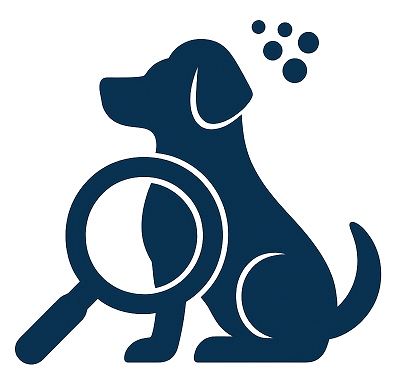
Introduction
Walking your dog should be a pleasant experience for both you and your furry friend, but for many dog owners, it can turn into a challenging ordeal. One of the key elements to a smooth and enjoyable walk is teaching your dog to heel. Mastering the heel command not only enhances your walks but also strengthens the bond with your dog, improves their behavior, and ensures their safety. In this article, we will explore the strategies to teach your adult dog to heel, offering actionable insights and tips to transform your walks today.
Understanding the Heel Command
The heel command requires your dog to walk calmly beside you with their shoulder parallel to your leg. This position provides you with control and ensures that your dog doesn’t pull on the leash, veer off, or behave inappropriately during walks. While many associate heeling with competitive obedience, it is a practical skill that can make daily walks more enjoyable and manageable.
Preparing for Training
Assess Your Dog’s Current Behavior
Before embarking on training, evaluate your dog’s current walking habits. Does your dog frequently pull on the leash? Are they easily distracted by other dogs, people, or stimuli? Understanding these behaviors will help you tailor your training approach and set realistic expectations.
Gather Necessary Tools
To effectively teach the heel command, gather the following tools:
– **A sturdy leash**: A standard 4 to 6-foot leash is ideal for maintaining control.
– **A comfortable collar or harness**: Ensure it fits well and gives you control without causing discomfort.
– **High-value treats**: Use small, soft treats that your dog loves to reinforce positive behavior.
– **Clicker (optional)**: A clicker can be used to mark desired behaviors, making it easier for your dog to understand what is expected.
Training Techniques
Start Indoors
Begin training in a familiar, distraction-free environment indoors. This allows your dog to focus on learning the new command without external distractions. Once your dog consistently performs the heel indoors, gradually transition to more challenging environments.
Use Positive Reinforcement
Positive reinforcement is crucial when teaching the heel command. Reward your dog with treats, praise, or affection every time they successfully walk beside you. This encourages them to associate heeling with positive experiences.
Establish a Cue
Choose a specific word or phrase, such as “heel” or “let’s walk,” to signal your dog to move into the heel position. Consistently use this cue during training to help your dog understand and respond accordingly.
Leash Handling Techniques
Proper leash handling is fundamental to training your dog to heel. Hold the leash with a relaxed grip, allowing your dog some freedom to move while maintaining control. Avoid pulling or yanking the leash, as this can cause resistance or fear.
Utilize the Lure and Reward Method
With your dog on a leash, hold a treat in your hand close to your leg. Use the treat to guide your dog into the heel position by your side. Once in position, reward your dog with the treat and verbal praise. Repeat this process several times, gradually increasing the duration your dog maintains the heel position.
Practice Direction Changes
To keep your dog engaged and attentive, practice changing directions frequently during training. This could include making wide turns, U-turns, or weaving through obstacles. Each time you change direction, use your chosen cue and reward your dog for staying by your side.
Addressing Common Challenges
Dealing with Distractions
As you progress in training, introduce distractions gradually. Start with mild distractions like toys or family members walking by. Use your cue and reward system to encourage your dog to maintain focus. Over time, expose your dog to more challenging distractions, such as other dogs or busy environments.
Managing Pulling on the Leash
If your dog begins to pull, stop walking immediately. Wait until your dog returns to your side, then continue walking with the heel command. Consistency is key; your dog will learn that pulling results in a halt in movement.
Correcting Lagging Behind
Some dogs may lag behind instead of pulling. To address this, use an enthusiastic tone and encourage your dog to catch up. Reward them once they are back in position. You can also use a favorite toy to entice them to walk beside you.
Maintaining Consistency and Patience
Consistency is Key
Consistency in commands, rewards, and expectations is crucial for successful training. Ensure that all family members involved in walking the dog use the same cues and techniques to avoid confusing your dog.
Be Patient
Training an adult dog to heel requires time and patience. Every dog learns at their own pace, and setbacks are normal. Celebrate small victories and remain patient and positive throughout the process.
Advanced Heel Training
Off-Leash Heeling
Once your dog has mastered the heel command on a leash, you can progress to off-leash training. Start in a secure, enclosed area and gradually increase the level of difficulty by incorporating distractions. Continue to use positive reinforcement to reward your dog for heeling off-leash.
Variable Reward Schedule
As your dog becomes proficient in heeling, transition to a variable reward schedule. Instead of rewarding every successful heel, reward intermittently. This keeps your dog motivated and reinforces the behavior without becoming reliant on constant treats.
Conclusion
Mastering the heel command can significantly transform your walks with your dog, making them more enjoyable and manageable. By understanding the basics of the heel command, preparing for training, and employing effective techniques, you can teach your adult dog to walk calmly by your side. Remember to address challenges with patience and consistency, and celebrate the progress you and your dog make together. With dedication and practice, you can transform your walks today and enjoy a harmonious walking experience with your canine companion.













